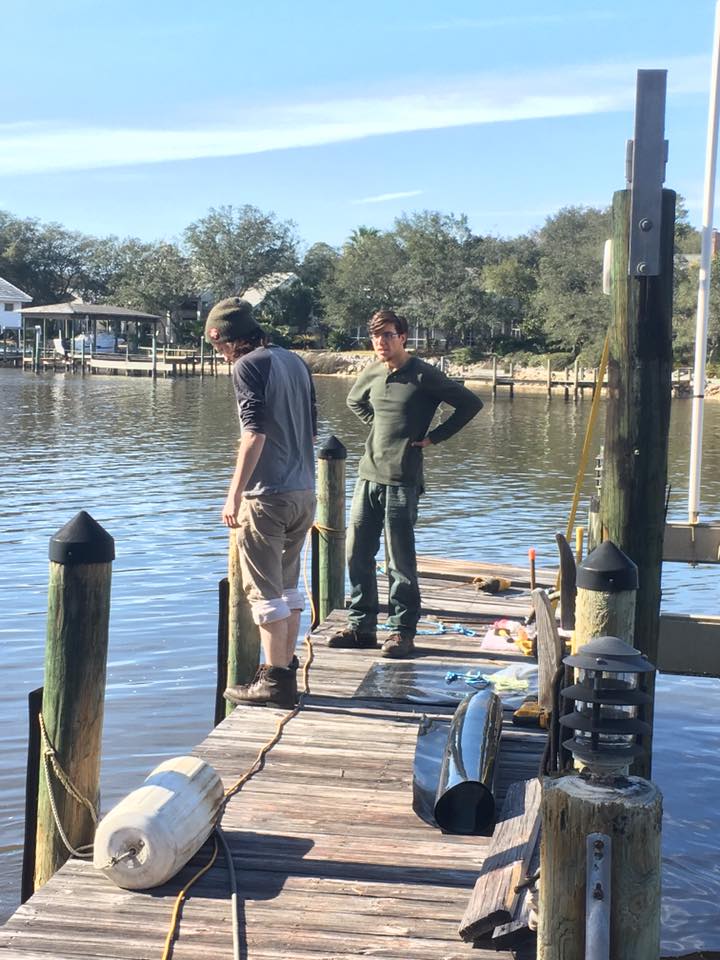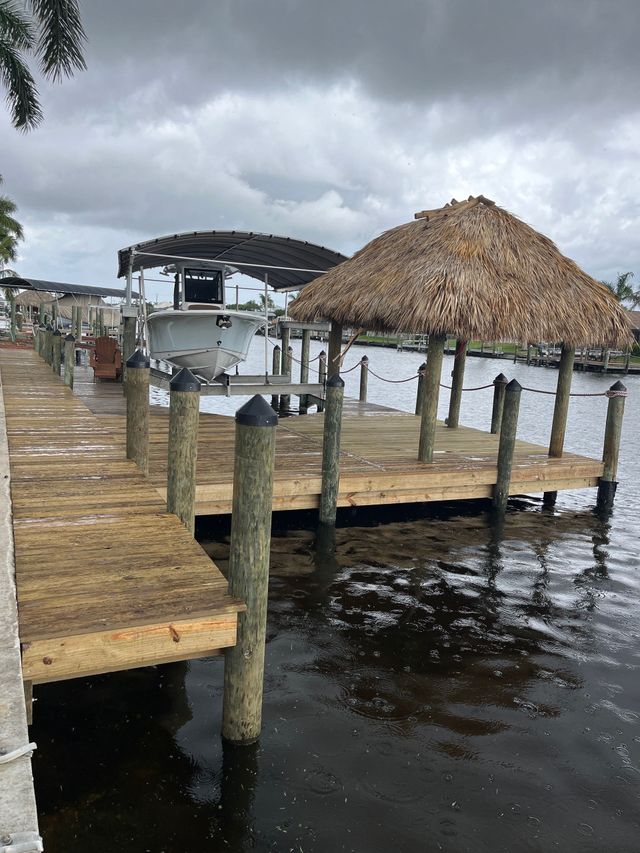Reliable Dock Fixing Techniques: Ensuring Structural Integrity
Making certain the structural stability of anchors via effective repair methods is vital for the long life and security of marine centers. This entails a multi-faceted approach beginning with thorough inspections using sophisticated innovations like finder equipment and remotely operated lorries (ROVs) to discover both visible and concealed damages. Ultimately, picking the best repair work materials, such as corrosion-resistant alloys and composite materials, is important for durability. Structural reinforcement techniques, consisting of the implementation of cross-bracing systems and load-distribution plates, play a crucial function in mitigating anxiety factors. Nevertheless, the significance of these techniques ends up being obvious when exploring innovative repair work methods and preventative maintenance methods.
Examining Dock Damages
Analyzing dock damages is a critical initial step in guaranteeing the structural honesty and safety and security of any kind of docking center. This initial analysis includes a detailed assessment to recognize both hidden and noticeable damages. Key aspects to check out consist of the dock's structure, pilings, outdoor decking, and equipment. Each part has to be looked at for indications of wear, rot, corrosion, or various other forms of deterioration that can jeopardize the architectural integrity.
Architectural designers or qualified examiners usually carry out these assessments making use of specialized devices and methods. Undersea inspections could utilize finder tools or remotely ran vehicles (ROVs) to find immersed damage. Above water, aesthetic evaluations are matched by utilizing moisture meters and various other analysis tools to reveal underlying issues not promptly visible to the naked eye.

Choosing Repair Work Materials
Picking the ideal repair work materials is a crucial step in the dock reconstruction process, one that straight affects the longevity and efficiency of the fixed structure. Product option have to be driven by aspects such as ecological problems, load-bearing demands, and compatibility with existing dock parts.
In enhancement to wood, composite materials are progressively prominent because of their toughness and low upkeep needs. Composites, commonly made from a mix of plastic and timber fibers, offer outstanding resistance to rot, insects, and UV damages. For steel docks, choosing corrosion-resistant alloys such as galvanized steel or marine-grade light weight aluminum is necessary to prevent corrosion and ensure architectural honesty in saline water problems.
Epoxy resins and marine-grade sealants are essential for repairing cracks and sealing joints, providing a water resistant barrier and boosting the dock's general stamina. By thoroughly selecting high-grade materials, dock repairs can achieve durable outcomes, thus safeguarding versus future degradation and making sure secure, dependable use.
Structural Support Techniques
Efficient architectural support methods are critical in making sure the security and longevity of dock repair services. One essential technique includes making use of steel or composite support bars (rebar) within concrete structures. Rebar provides extra tensile strength, protecting against splits and dispersing lots a lot more uniformly. This approach is especially reliable for docks subjected to heavy tons or extreme environmental conditions.
Another necessary technique is the application of fiber-reinforced polymers (FRP) These products offer high strength-to-weight proportions and superb resistance to rust, making them optimal for reinforcing wooden or concrete docks. FRP can be used in strips or sheets and bound with epoxy materials to boost structural integrity.
Bracing and anchoring systems additionally play an essential duty in architectural support. Cross-bracing, utilizing steel or wood beam of lights, can neutralize side pressures, decreasing guiding and activity. Anchoring systems, such as helical piers or driven heaps, give a steady foundation by moving tons to much deeper, much more steady dirt layers.
Finally, the integration of load-distribution plates can assist disperse weight a lot more equally throughout the dock's surface, mitigating local stress and anxiety points. These strategies jointly guarantee that anchors remain durable and safe, with the ability of withstanding the visit homepage roughness of their operational environment.
Advanced Repair Work Approaches

Another sophisticated strategy entails undersea welding, which enables for repair services to be conducted without the demand to dewater the area. This method is especially advantageous for resolving architectural concerns in immersed dock components, guaranteeing very little disturbance to operations. Enhanced welding strategies, combined with robotic systems, provide precision and integrity, thereby expanding the life expectancy of the dock.
In addition, cathodic security systems are applied to stop deterioration in metallic dock structures. By utilizing sacrificial anodes or satisfied present systems, these techniques efficiently minimize the electrochemical processes that bring about material degeneration.
Lastly, progressed monitoring innovations, such as architectural health and wellness monitoring (SHM) systems, offer real-time information on the condition of dock frameworks. These systems enable aggressive maintenance and timely treatments, ultimately making sure the Find Out More long-lasting architectural integrity of the dock.
Upkeep and Prevention
Maintenance and prevention are basic principles that underpin the longevity and safety of dock structures. Normal examinations are paramount, enabling for very early discovery of damage, potential weak points, and ecological effects. A positive approach, including regular look for deterioration, rot, and architectural changes, minimizes expensive fixings and lengthens the dock's functional life.
Preventative actions must include using safety coatings to steel components to guard against corrosion and using treated wood to resist degeneration. In addition, making certain appropriate drainage and air flow can stop water build-up, which is an usual reason for architectural deterioration. Integrating quality products and sticking to maker guidelines throughout building and repair stages likewise play vital roles in enhancing toughness.

Educating personnel in dock upkeep best practices makes sure consistent application of preventive steps. Leveraging technical developments, such as drones for evaluations and sensors for real-time tracking, can further enhance upkeep efforts. By focusing on upkeep and prevention, dock owners can ensure structural integrity, functional safety, and affordable management over the dock's life expectancy.
Conclusion
In conclusion, preserving the architectural integrity of marine centers requires thorough dock repair work techniques. Advanced repair work strategies, coupled with routine upkeep practices, guarantee the dock stays functional and risk-free under varied environmental conditions.
Making sure the architectural stability of docks through reliable repair techniques is vital for the durability and safety and security of aquatic centers.Picking the proper fixing products is a crucial action in the dock restoration process, one that straight influences the longevity and efficiency of the fixed framework.Reliable structural reinforcement techniques are essential in guaranteeing the security and durability of dock repair services. By focusing on upkeep and avoidance, dock owners can make sure structural integrity, functional security, and cost-effective management over the dock's life-span.
In visit this web-site verdict, keeping the architectural honesty of aquatic facilities necessitates detailed dock repair methods.